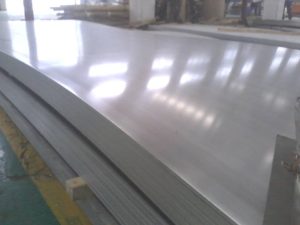Aluminium alloys with a wide range of properties are used in engineering structures. Alloy systems are classified by a number system (ANSI) or by names indicating their main alloying constituents (DIN and ISO). Selecting the right alloy for a given application entails considerations of its tensile strength, density, ductility, formability, workability, weldability, and corrosion resistance, to name a few. A brief historical overview of alloys and manufacturing technologies is given in Ref Aluminium alloys are used extensively in aircraft due to their high strength-to-weight ratio. On the other hand, pure aluminium metal is much too soft for such uses, and it does not have the high tensile strength that is needed for airplanes and helicopters.

Aluminium alloys versus types of steel
Aluminium alloys typically have an elastic modulus of about 70 GPa, which is about one-third of the elastic modulus of most kinds of steel and steel alloys. Therefore, for a given load, a component or unit made of an aluminium alloy will experience a greater deformation in the elastic regime than a steel part of identical size and shape. Though there are aluminium alloys with somewhat-higher tensile strengths than the commonly used kinds of steel, simply replacing a steel part with an aluminium alloy might lead to problems.
With completely new metal products, the design choices are often governed by the choice of manufacturing technology. Extrusions are particularly important in this regard, owing to the ease with which aluminium alloys, particularly the Al–Mg–Si series, can be extruded to form complex profiles.
In general, stiffer and lighter designs can be achieved with Aluminium alloy than is feasible with steels. For instance, consider the bending of a thin-walled tube: the second moment of area is inversely related to the stress in the tube wall, i.e. stresses are lower for larger values. The second moment of area is proportional to the cube of the radius times the wall thickness, thus increasing the radius (and weight) by 26% will lead to a halving of the wall stress. For this reason, bicycle frames made of aluminium alloys make use of larger tube diameters than steel or titanium in order to yield the desired stiffness and strength. In automotive engineering, cars made of aluminium alloys employ space frames made of extruded profiles to ensure rigidity. This represents a radical change from the common approach for current steel car design, which depend on the body shells for stiffness, known as unibody design.

Comments are closed.